Why Indoor Gardening Projects for Kids Are a Game-Changer for Families
If you’re looking for a way to keep your kids engaged, educated, and entertained, indoor gardening projects for kids are the perfect solution. These activities bring nature indoors, offering a hands-on way to teach children about science, responsibility, and sustainability—all while having fun! Whether you’re a parent, teacher, or caregiver, indoor gardening projects for kids provide endless opportunities for learning and creativity.
In this guide, you’ll find 15+ easy, engaging indoor gardening projects for kids that are perfect for any space, budget, or age group. From sprouting avocado pits to creating mini terrariums, these activities are designed to inspire curiosity and foster a love for nature. So, let’s explore how indoor gardening projects for kids can transform your home into a vibrant, educational, and green space!
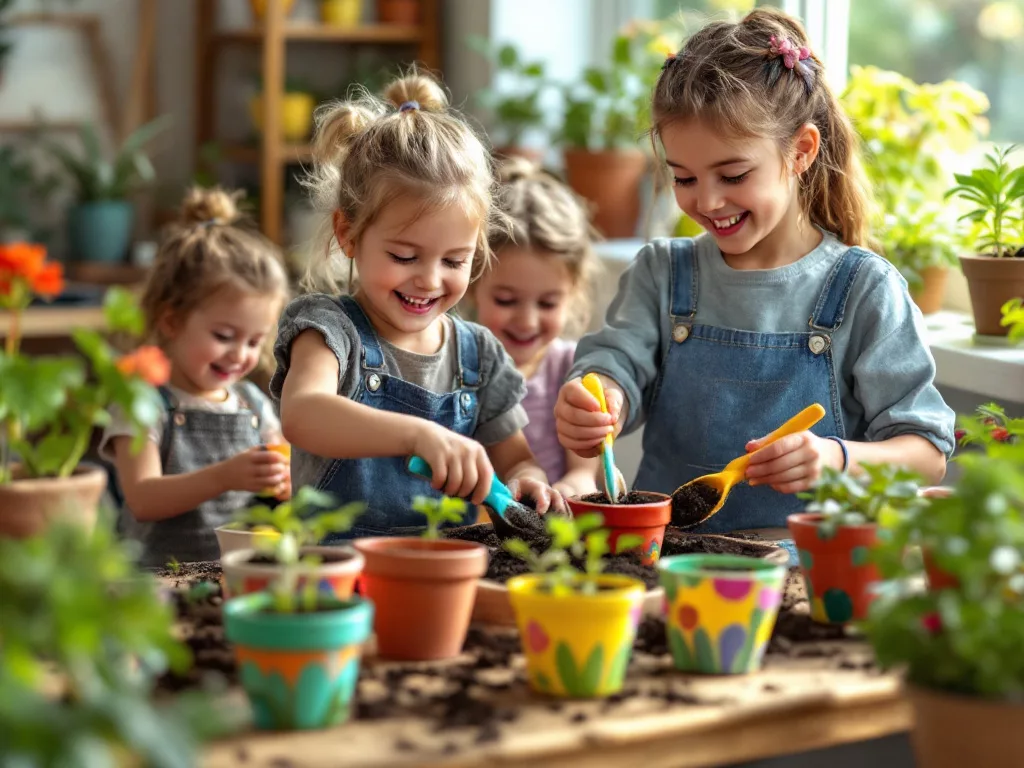
The Science and Benefits of Indoor Gardening Projects for Kids
Indoor gardening projects for kids are more than just a fun pastime—they’re a powerful educational tool. Here’s why experts and parents alike love these activities:
1. Enhances Cognitive and Motor Skills
When kids participate in indoor gardening projects for kids, they engage multiple senses—touching soil, observing plant growth, and even tasting the results. This multisensory experience boosts cognitive development, fine motor skills, and problem-solving abilities.
Example: Planting seeds in small pots helps kids develop hand-eye coordination, while tracking plant growth teaches them about measurement and time.
2. Teaches Responsibility and Patience
One of the greatest lessons from indoor gardening projects for kids is learning to care for another living thing. Kids quickly understand that plants need water, sunlight, and love to thrive. This fosters a sense of responsibility and patience, as they wait for seeds to sprout and plants to grow.
Real-Life Story: My friend’s daughter, Emma, started with a simple bean-in-a-bag project as part of her kids plant activities. She was so excited to see the roots grow that she checked on her bean every morning. When the sprout finally emerged, she beamed with pride—this small success taught her the value of patience and consistency.
3. Encourages Healthy Eating Habits
Indoor gardening projects for kids that involve growing food—like herbs, microgreens, or cherry tomatoes—can inspire kids to try new, healthy foods. When children grow their own food, they’re more likely to eat it and understand where it comes from.
Pro Tip: Start with fast-growing plants like radish microgreens or basil. Kids can see (and taste!) the results in just a few weeks, making it a rewarding experience.
4. Reduces Stress and Boosts Mood
Did you know that interacting with plants can lower stress and anxiety? Studies show that gardening reduces cortisol levels (the stress hormone) and increases feelings of calm. For kids, this is especially helpful during busy school weeks or before bedtime.
Science Connection: NASA’s Clean Air Study found that certain indoor plants, like spider plants and peace lilies, purify the air by removing toxins. So, your indoor gardening projects for kids aren’t just fun—they’re also making your home healthier!
5. Strengthens Family Bonds
Indoor gardening projects for kids are a fantastic way to spend quality time together. Whether you’re planting seeds, decorating pots, or harvesting herbs, these shared moments create lasting memories and strengthen family connections.
Personal Experience: Last winter, my family started a pizza garden with tomatoes, basil, and oregano as part of our family gardening indoor activities. My kids loved checking on the plants daily, and we all enjoyed making pizza together with our homegrown ingredients. It became a cherished weekly tradition!
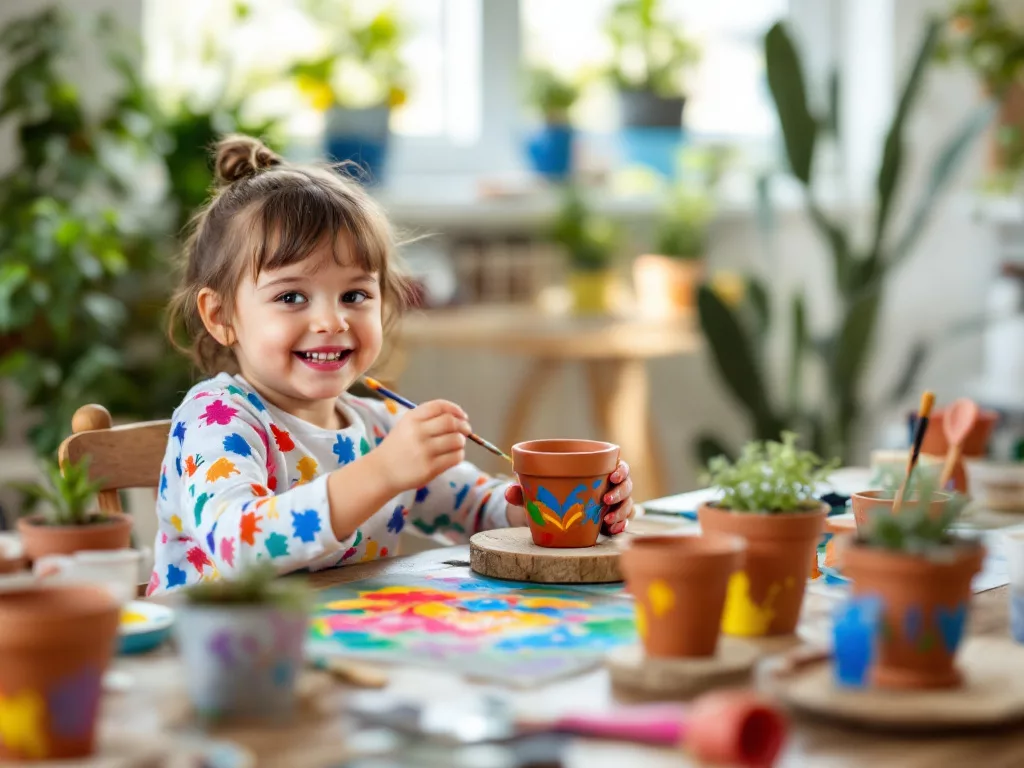
Essential Supplies for Indoor Gardening Projects for Kids
You don’t need a green thumb or expensive tools to get started with indoor gardening projects for kids. Here’s a simple list of supplies to gather:
Basic Tools:
- Containers: Small pots, egg cartons, yogurt cups, or even old shoes (yes, really!).
- Soil: Organic potting soil is best for indoor gardening projects for kids.
- Seeds or Seedlings: Start with easy-to-grow options like beans, sunflowers, or herbs.
- Watering Can or Spray Bottle: Kids love using spray bottles—it feels like a science experiment!
- Gloves (Optional): Great for messy hands or sensitive skin.
To make your indoor gardening projects for kids even easier, here are some of our favorite supplies (affiliate links included). These products are kid-friendly, durable, and perfect for beginners:
Creative Extras:
- Markers and Popsicle Sticks: For labeling plants and tracking growth.
- Decorative Pebbles or Stickers: Let kids personalize their pots.
- Magnifying Glass: Perfect for observing tiny details like roots or insects.
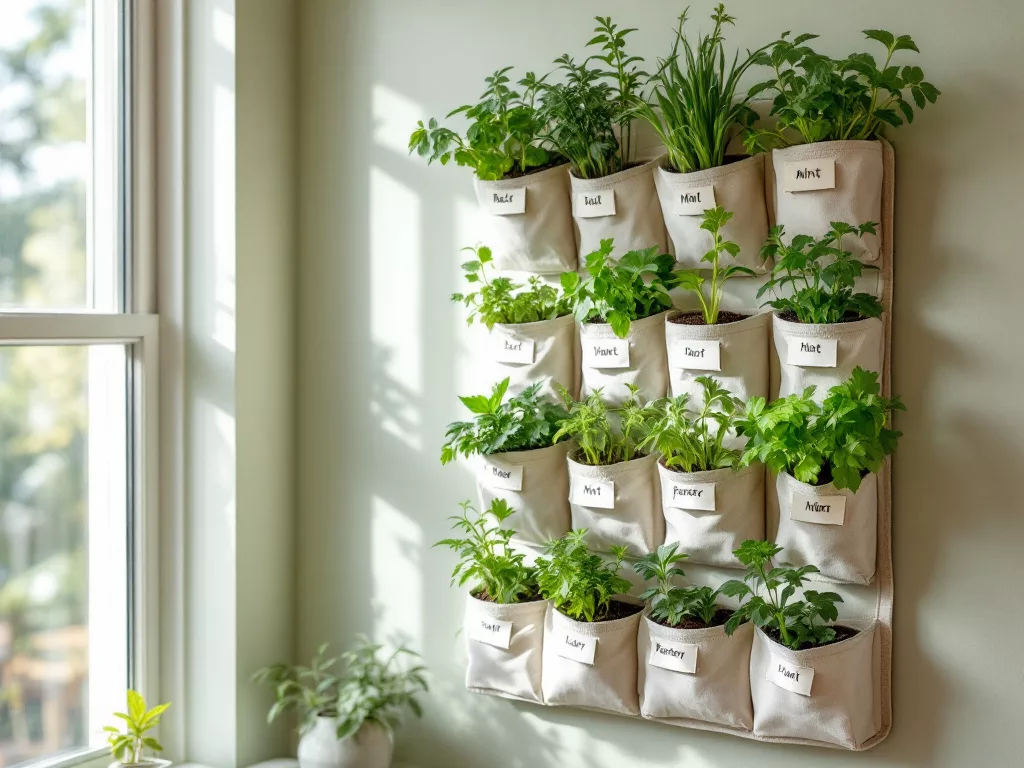
Budget-Friendly Tip: Repurpose household items! Use toilet paper rolls as seed starters, or turn a plastic bottle into a self-watering planter. The possibilities are endless for indoor gardening projects for kids!
15+ Indoor Gardening Projects for Kids: Step-by-Step Guides
1. Grow an Avocado Tree from a Pit
Why Kids Love It: It’s like magic—turning kitchen scraps into a tree! Skills Learned: Patience, life cycles, and recycling.
What You’ll Need:
- Avocado pit
- 3 toothpicks
- Glass of water
Steps:
- Clean the avocado pit and let it dry overnight.
- Insert toothpicks around the pit’s middle to suspend it over a glass of water.
- Place the glass in a sunny spot (like a windowsill).
- Change the water every few days and wait for roots and a sprout (4–6 weeks).
- Once the stem reaches 6 inches, transplant it to a pot with soil.
Lesson: Teaches kids about germination and how plants grow from seeds.
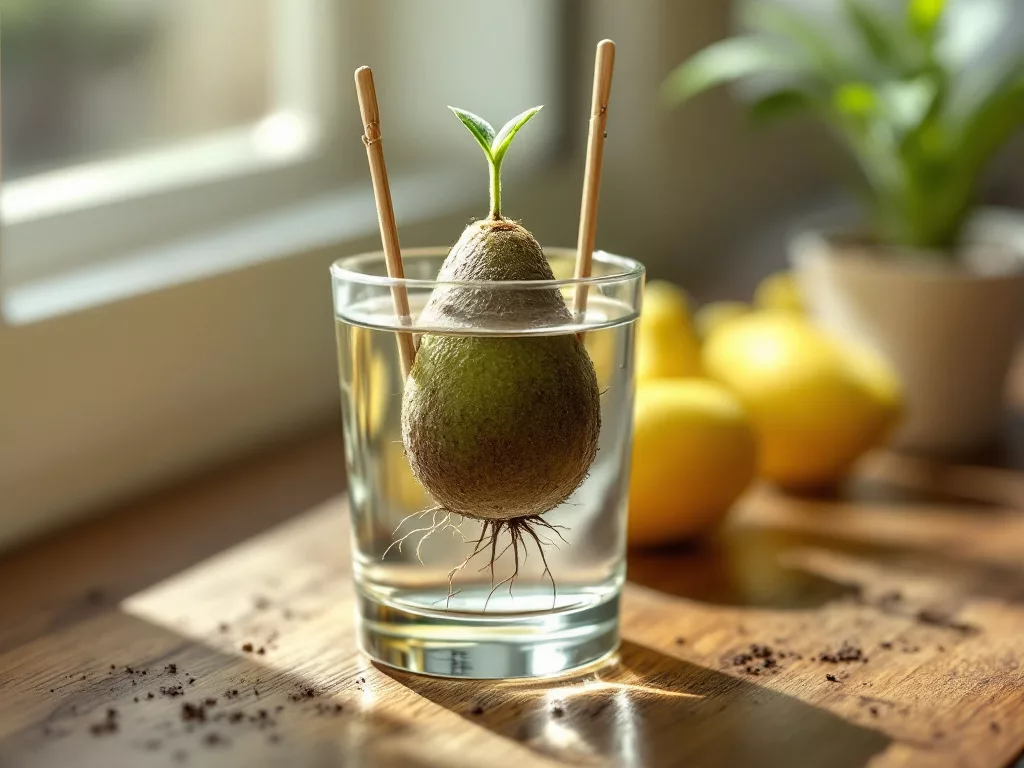
Pro Tip: Use a clear glass so kids can watch the roots grow! This is one of the most rewarding indoor gardening projects for kids because it’s simple and visually exciting.
2. Create a Mini Terrarium
Why Kids Love It: It’s a tiny, self-sustaining world! Skills Learned: Ecosystems, water cycle, and creativity.
What You’ll Need:
- Clear glass jar or bowl
- Pebbles
- Activated charcoal (optional, for freshness)
- Potting soil
- Small plants (moss, ferns, or succulents)
Steps:
- Layer pebbles at the bottom for drainage.
- Add a thin layer of charcoal (if using) to keep the terrarium fresh.
- Fill with soil and plant your tiny plants.
- Decorate with rocks, figurines, or shells.
- Mist with water and seal the jar (or leave open for air plants).
Lesson: Explains how ecosystems work and the importance of balance.
Fun Idea: Create a dinosaur terrarium with plastic dinos or a fairy garden with tiny houses! This is a fantastic project for kids plant activities that spark imagination.
Terrarium kids Kit ready to grow
3. Sprout Herbs in Eggshells
Why Kids Love It: They can eat what they grow! Skills Learned: Sustainability, cooking, and plant care.
What You’ll Need:
- Eggshells (cleaned and dried)
- Potting soil
- Herb seeds (basil, chives, or parsley)
Steps:
- Crack eggs carefully, keeping the top half of the shell.
- Fill each shell with soil and plant 2–3 seeds.
- Place the shells in an egg carton and water lightly.
- Once sprouts appear, transplant them to a pot or garden.
Lesson: Introduces sustainable gardening and the farm-to-table concept.
Bonus: Use the eggshells as natural fertilizer—crush them and mix into the soil for extra calcium! This is a great way to combine indoor gardening projects for kids with eco-friendly practices.
4. Grow a Bean in a Bag
Why Kids Love It: They can see roots and leaves grow in real time! Skills Learned: Germination, plant growth stages.
What You’ll Need:
- Ziploc bag
- Paper towel
- Bean seeds
- Tape
Steps:
- Dampen a paper towel and place it inside the bag.
- Add 2–3 bean seeds and seal the bag.
- Tape the bag to a sunny window.
- Watch as roots and sprouts appear in just a few days!
Lesson: Demonstrates how seeds grow into plants.
Science Connection: Have kids draw the growth stages in a notebook! This is one of the best indoor gardening projects for kids for teaching science in a hands-on way.
5. Make a Pizza Garden
Why Kids Love It: They can grow their own pizza toppings! Skills Learned: Nutrition, cooking, and teamwork.
What You’ll Need:
- Pots or a large container
- Soil
- Seeds for tomatoes, basil, oregano, and peppers
Steps:
- Plant each herb/veggie in separate pots or sections of a container.
- Care for them until they’re ready to harvest.
- Use the fresh ingredients to make a homemade pizza!
Lesson: Connects gardening to healthy eating and cooking.
Fun Twist: Let kids name their pizza garden (e.g., “Lucas’s Super Pizza Patch”). This is a delicious and educational family gardening indoor activity!
6. Design a Fairy Garden
Why Kids Love It: It’s gardening meets storytelling! Skills Learned: Creativity, imaginative play.
What You’ll Need:
- Shallow container (like a baking tray)
- Soil
- Small plants (succulents, moss)
- Decorations (pebbles, tiny furniture, fairy figures)
Steps:
- Fill the container with soil.
- Plant small plants and add decorations to create a magical scene.
- Mist with water to keep it fresh.
Lesson: Encourages creative thinking and storytelling.
Idea: Have kids write a story about the fairies who live in their garden! This is one of the most whimsical indoor gardening projects for kids.
7. Grow Microgreens in a Tray
Why Kids Love It: Fast results—they can eat their greens in 2 weeks! Skills Learned: Nutrition, quick rewards.
What You’ll Need:
- Seed tray or shallow container
- Soil
- Microgreen seeds (radish, sunflower, or broccoli)
Steps:
- Fill the tray with soil and scatter seeds evenly.
- Mist with water and place in a sunny spot.
- Harvest with scissors when greens are 2–3 inches tall.
Lesson: Teaches quick rewards and the joy of growing food.
Health Boost: Microgreens are packed with nutrients—add them to sandwiches or salads! This is a nutritious and fun kids plant activity.
8. Build a DIY Greenhouse
Why Kids Love It: They can watch plants grow in their own “science lab”! Skills Learned: Climate, plant needs.
What You’ll Need:
- Clear plastic container (like a salad box)
- Soil
- Seeds
Steps:
- Plant seeds in soil inside the container.
- Close the lid to create a humid environment.
- Observe how plants grow faster in the greenhouse effect.
Lesson: Explains the greenhouse effect and how plants thrive in warm, humid conditions.
Experiment: Compare growth inside vs. outside the greenhouse! This is a fantastic indoor gardening project for kids that teaches science concepts.
9. Paint and Plant Flower Pots
Why Kids Love It: They get to personalize their garden! Skills Learned: Art, self-expression.
What You’ll Need:
- Terracotta pots
- Acrylic paint
- Soil
- Flowers or herbs
Steps:
- Let kids paint and decorate pots with their favorite designs.
- Fill with soil and plant seeds or seedlings.
- Display their artwork and watch it grow!
Lesson: Combines art and gardening for a creative outlet.
Idea: Host a “pot painting party” with friends or siblings! This is a colorful and engaging family gardening indoor activity.
10. Grow a Sweet Potato Vine
Why Kids Love It: It’s a fast-growing, leafy plant! Skills Learned: Plant propagation, recycling.
What You’ll Need:
- Sweet potato
- Toothpicks
- Jar of water
Steps:
- Suspend a sweet potato in water using toothpicks.
- Place in a sunny spot and change the water weekly.
- Watch as vines grow in just days!
Lesson: Shows how plants can grow from food scraps.
Fun Fact: Sweet potato vines are edible and make a great addition to salads! This is a unique and educational indoor gardening project for kids.
11. Create a Sensory Herb Garden
Why Kids Love It: They can touch, smell, and taste different herbs! Skills Learned: Sensory exploration, plant identification.
What You’ll Need:
- Small pots
- Soil
- Herb seeds (mint, lavender, rosemary, thyme)
Steps:
- Plant each herb in a separate pot.
- Let kids touch and smell the leaves as they grow.
- Use the herbs in cooking or crafts (like lavender sachets).
Lesson: Introduces sensory learning and the diversity of plants.
Activity: Play “Guess the Herb” by blindfolding kids and having them smell each plant! This is a fun and interactive kids plant activity.
12. Grow a Rainbow of Carrots
Why Kids Love It: They can grow colorful carrots indoors! Skills Learned: Plant varieties, nutrition.
What You’ll Need:
- Deep container
- Soil
- Rainbow carrot seeds
Steps:
- Fill the container with soil and plant carrot seeds.
- Keep the soil moist and place in a sunny spot.
- Harvest when carrots are ready (about 60 days).
Lesson: Teaches about plant varieties and healthy eating.
Fun Idea: Compare the colors and tastes of different carrot varieties! This is a vibrant and educational indoor gardening project for kids.
13. Make a Seed Bomb
Why Kids Love It: They can “bomb” their garden with wildflowers! Skills Learned: Pollinators, environmental stewardship.
What You’ll Need:
- Clay
- Soil
- Wildflower seeds
- Water
Steps:
- Mix clay, soil, and seeds with water to form a dough.
- Roll into small balls and let them dry.
- Toss the seed bombs into a garden or pot and watch flowers grow!
Lesson: Introduces pollinators and how plants spread in nature.
Eco-Friendly Tip: Use native wildflower seeds to support local bees and butterflies! This is a fun and impactful family gardening indoor activity.
14. Grow a Pineapple Plant
Why Kids Love It: They can grow a tropical plant from a grocery store pineapple! Skills Learned: Plant propagation, tropical plants.
What You’ll Need:
- Pineapple top
- Jar of water
Steps:
- Twist off the pineapple top and remove the bottom leaves.
- Place the top in a jar of water and wait for roots to grow (2–3 weeks).
- Transplant to soil and watch your pineapple plant grow!
Lesson: Shows how tropical plants can grow indoors.
Fun Fact: It takes about 2 years for a pineapple plant to produce fruit, but the leaves are beautiful! This is a unique and exciting indoor gardening project for kids.
15. Build a Vertical Garden
Why Kids Love It: They can grow plants upward like a wall of green! Skills Learned: Space-saving gardening, creativity.
What You’ll Need:
- Shoe organizer or hanging pockets
- Soil
- Small plants or herbs
Steps:
- Fill each pocket with soil and plant seeds or seedlings.
- Hang the organizer on a wall or balcony.
- Water and watch your vertical garden grow!
Lesson: Teaches space-saving techniques for small spaces.
Idea: Grow herbs or strawberries for a functional and beautiful display! This is a practical and creative indoor gardening project for kids.
Common Mistakes to Avoid in Indoor Gardening Projects for Kids
Even the best gardeners run into issues. Here’s how to troubleshoot common problems in your indoor gardening projects for kids:
| Problem | Cause | Solution |
|---|---|---|
| Yellow leaves | Overwatering | Let soil dry between waterings. |
| Leggy seedlings | Not enough light | Move to a sunnier spot or use a grow light. |
| Moldy soil | Poor drainage | Add pebbles to the bottom of pots. |
| No sprouts | Seeds planted too deep | Plant seeds at 2x their width. |
| Pests (like aphids) | Infested soil or plants | Spray with soapy water or introduce ladybugs. |
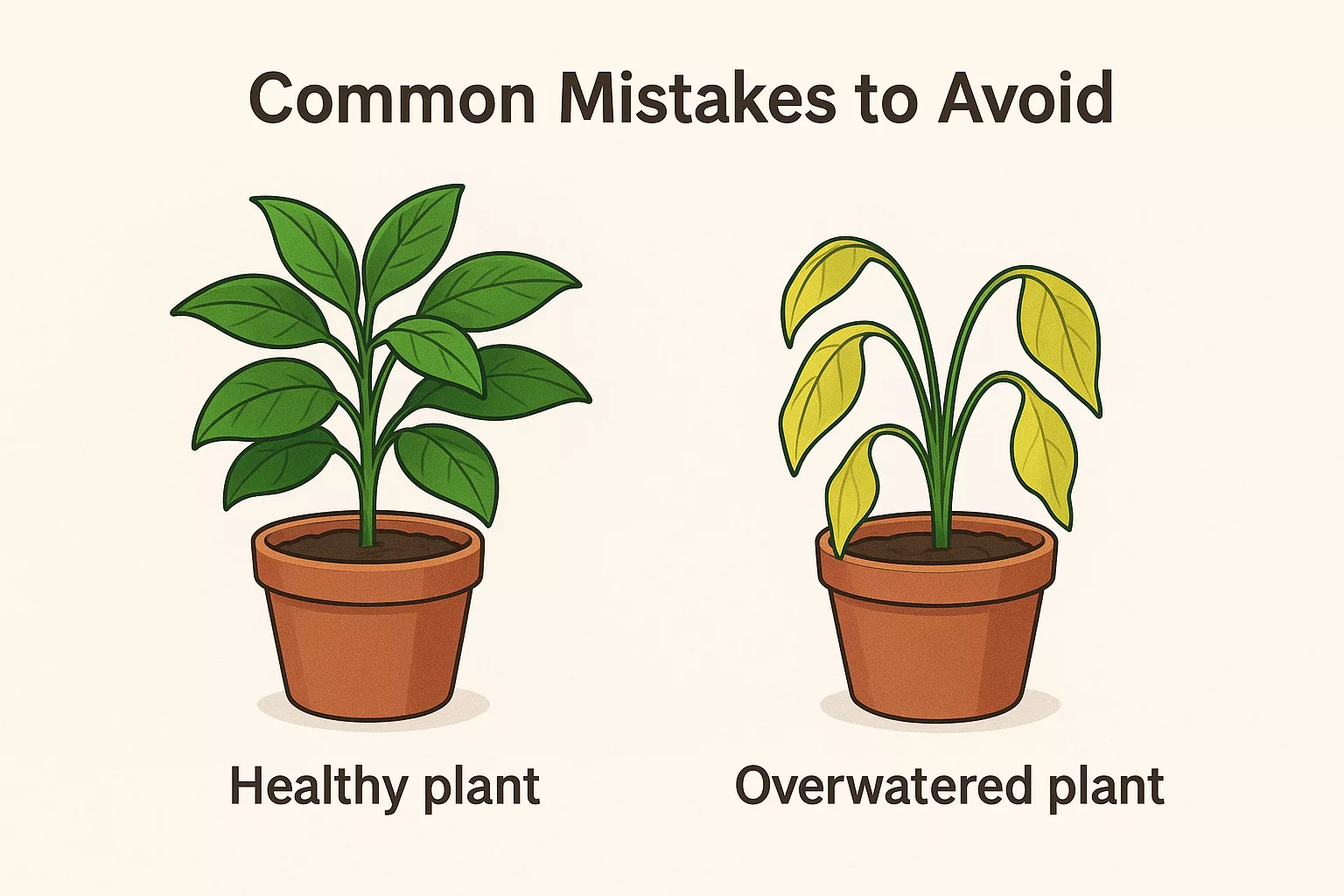
Pro Tip: Keep a gardening journal to track what works and what doesn’t. Kids can draw pictures of their plants and note changes! This is a great way to enhance kids plant activities with a scientific approach.
Creative Ways to Display Kids’ Indoor Gardens
Make their projects part of your home decor with these fun ideas for your indoor gardening projects for kids:
1. Hang Plants in Macramé Holders
Use colorful macramé hangers to display pots near windows. Kids will love seeing their plants at eye level!
2. Turn a Bookshelf into a Plant Display
Arrange pots on different shelves for a living bookshelf. Add fairy lights for extra magic!
3. Use a Shoe Organizer as a Vertical Garden
Perfect for small spaces! Hang it on a wall and fill each pocket with herbs or flowers.
4. Place Mini Gardens on Kitchen Windowsills
Keep herbs and microgreens within reach for cooking. Kids can snip fresh basil for pasta or mint for lemonade!
5. Create a “Plant Zoo”
Label each plant with fun names (e.g., “Mr. Basil” or “Sunny the Sunflower”) and let kids “feed” them (water) and “train” them (prune).
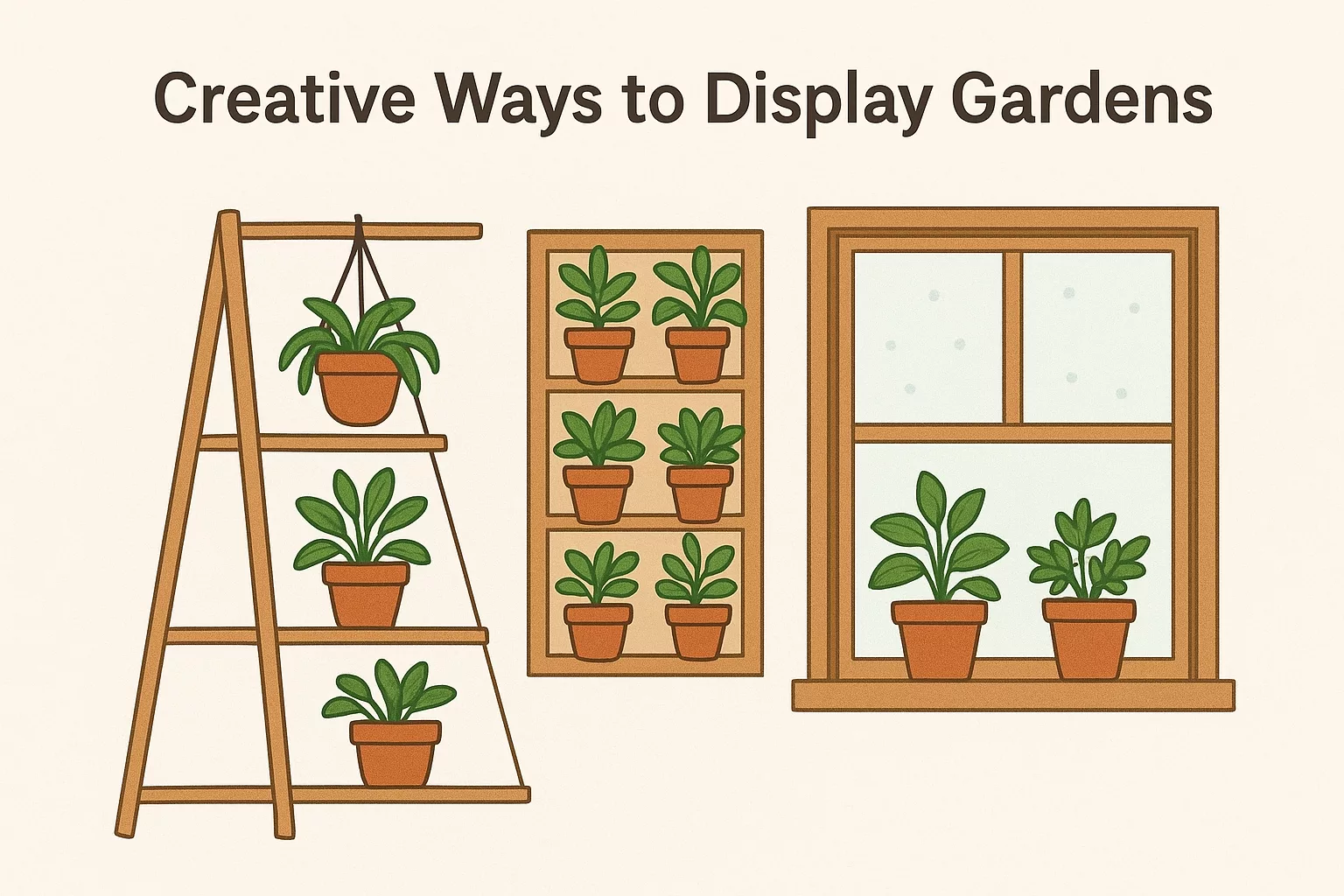
Case Study: How the Garcia Family Transformed Their Home with Indoor Gardening
The Garcia family lived in a small apartment with no outdoor space. Their kids, Mia (8) and Leo (5), loved nature but had never gardened before. They started with a bean-in-a-bag project, which sparked their curiosity. Soon, they added a pizza garden, a fairy terrarium, and a vertical herb wall as part of their family gardening indoor activities.
Results:
- Mia and Leo learned to water plants daily and track growth in their journals.
- The family saved money by growing their own herbs and microgreens.
- Their apartment felt brighter and more alive with plants in every room.
Mia’s Favorite Part: “I got to eat the basil I grew on my pizza! It tasted way better than store-bought.”
Leo’s Favorite Part: “I named my sunflower ‘Sunny,’ and it grew taller than me!”
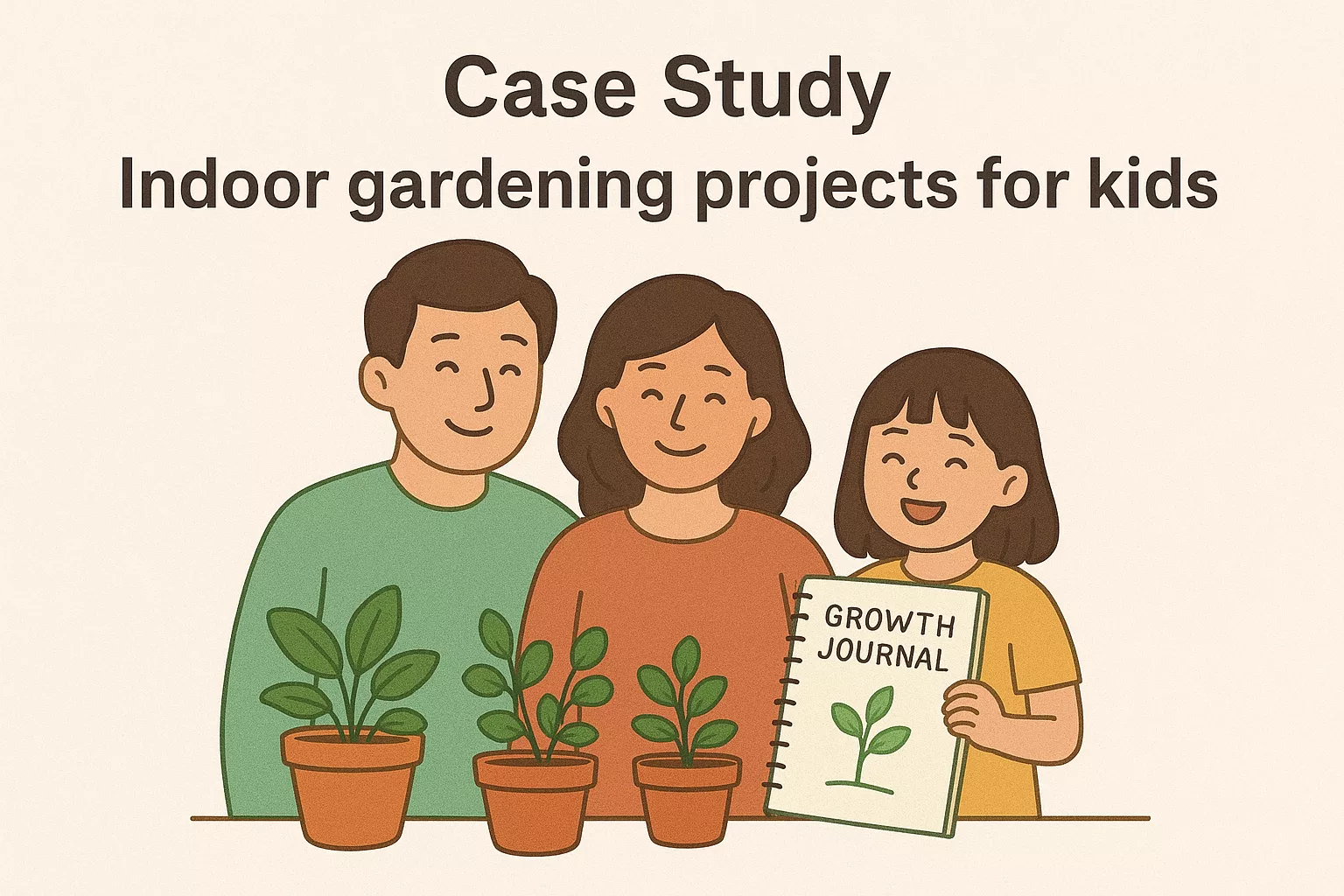
This story shows how indoor gardening projects for kids can transform a small space into a vibrant, educational, and fun environment for the whole family.
FAQs About Indoor Gardening Projects for Kids
What’s the easiest plant for kids to grow?
Beans, sunflowers, or microgreens are fast-growing and forgiving. For something edible, try basil or cherry tomatoes. These are perfect for indoor gardening projects for kids because they’re simple and rewarding.
How much light do indoor plants need?
Most need 4–6 hours of sunlight daily. If natural light is limited, use a grow light (available at garden centers). This is especially important for kids plant activities that involve growing food or flowers.
Can we reuse household items for gardening?
Absolutely! Egg cartons, yogurt cups, and even old boots can become planters. Check out these creative DIY indoor plant containers for more ideas! Repurposing items is a great way to make indoor gardening projects for kids budget-friendly.
How do I keep my child interested in gardening?
Let them choose plants, decorate pots, and track growth with photos or a journal. You can also turn gardening into a game—like a “plant growth race” between siblings! This keeps family gardening indoor activities fun and engaging.
Are there indoor plants that are safe for pets?
Yes! Spider plants, Boston ferns, and cat grass are pet-friendly. Avoid lilies, aloe, and pothos if you have curious pets. Safety is key in indoor gardening projects for kids with pets at home.
How can I teach my child about the science of gardening?
Use simple experiments, like testing how plants grow in different light conditions or making a DIY greenhouse to observe the water cycle. For more science-based activities, check out these kids plant activities.
What if we don’t have a green thumb?
Start with low-maintenance plants like succulents, snake plants, or microgreens. These are hard to kill and perfect for beginners. For more tips, read our guide on the best herbs to grow indoors for beginners. Even without experience, indoor gardening projects for kids can be successful and fun!
Conclusion: Grow Together, Learn Together with Indoor Gardening Projects for Kids
Indoor gardening projects for kids are more than just a way to pass the time—they’re a gateway to learning, creativity, and family bonding. Whether you start with a simple avocado pit or a full-fledged pizza garden, the joy of watching something grow is unmatched.
So, gather your supplies, pick a project from this guide, and let the adventure begin. Before you know it, your home will be filled with green thumbs, happy hearts, and delicious homegrown treats.
Which project will you try first? Share your stories and photos—we’d love to see your indoor gardening projects for kids in action! And if you’re ready to expand your gardening skills, check out our guide on family gardening indoor for more inspiration.
Check other ideas to your indoor garden space
Happy gardening! 🌱💚
